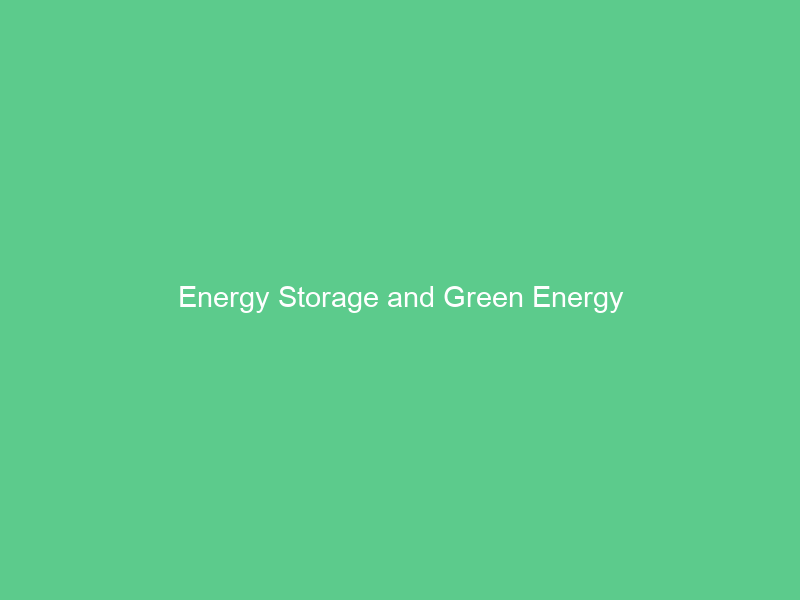Energy storage provides an important way of maintaining equilibrium on the electric power grid by providing storage solutions that store electricity in different forms.
Energy storage systems bring multiple advantages to both the electricity grid and customers. Here are some of the key ones:
Battery Storage
Battery storage enables green energy and can be installed either in homes or as part of a microgrid system. Battery storage helps stabilize power flow by storing energy when renewable sources (solar panels at night and windmills during calm days) aren’t producing as much electricity, then discharging that electricity into the grid at another time.
Utility-scale batteries can help reduce energy curtailment caused by renewables when their output exceeds what can be accommodated by the electricity grid due to economic or capacity issues, thus helping ensure renewable energy can be integrated more broadly and reducing dependence on fossil fuel generation.
Battery storage technology is an affordable solution that’s well suited for many uses in business and government organizations, depending on energy usage, location and project complexity. If battery storage sounds appealing to you, begin with conducting a feasibility study to assess its suitability in your organization.
Flywheel Storage
Similar to capacitors in its electrical application, flywheel energy storage stores mechanical momentum for later use. Flywheels can be utilized in numerous tasks that involve energy storage such as smoothing rapid changes in grid voltage and power output from intermittent renewables; regulating frequency when generators operate briefly out-of-sync with grid; powering mobile machinery at peak load times or fine-tuning the profile of electricity generated by wind turbines to match usage; as well as many others.
However, it should be remembered that flywheels were never intended to serve large scale, long term grid energy storage needs; such tasks are better fulfilled by technologies like pumped hydro and compressed air energy storage systems. Their low energy and power capacities restrict their potential as an enabler in global decarbonisation efforts; rather they excel in small-scale responsive energy storage niches where their speedy response time makes an impressionful statement about global decarbonisation efforts.
Thermal Storage
As we move toward green energy transition, it is critical that solutions be found that allow for the integration of intermittent renewable sources like wind or solar. Energy storage technologies play a pivotal role here.
Energy storage is also providing new forms of energy efficiency. By storing excess heat from renewable district heating networks, it is possible to shift peak demand for electricity during times with lower demand – thus reducing both costs and emissions.
At present, this can be accomplished by using power-to-heat converters to transform electricity into thermal energy and then storing it in insulated tanks before reconverting back to electricity using another set of power-to-heat converters. Short-term or battery-like storage technologies are typically utilized, while longer term seasonal storage technologies (e.g. a community in Canada that generates 90% of their heating needs from solar, with any remaining amount stored underground pumped storage) are being researched and developed as well. Often these longer duration systems can even integrate seamlessly with microgrids.
Hydrogen Storage
Hydrogen is an eco-friendly renewable energy carrier that can act as a bridge between intermittent renewable sources and our energy needs. By converting excess wind and solar power into hydrogen and discharging it at peak electric demand times, storage technologies help match variability of renewables to grid demands more closely.
Liquid hydrogen storage offers the highest energy density (120 MJ/kg), but requires large underground reservoirs like salt caverns which require considerable amounts of energy to excavate and fill. Researchers are exploring materials which could store hydrogen such as chemical hydrides and high surface area adsorbents that have high energy density per mass unit of storage capacity.
Energy storage technologies can be an invaluable asset to help bridge supply and demand imbalances and enhance power quality, which is crucial for safe operation of electric vehicles, appliances and equipment using electricity. But energy storage technologies come with inherent risks like flammability and cryogenic hazards that must be quantified for informed decision-making; risk assessment tools like RISKCURVES can assist here.

